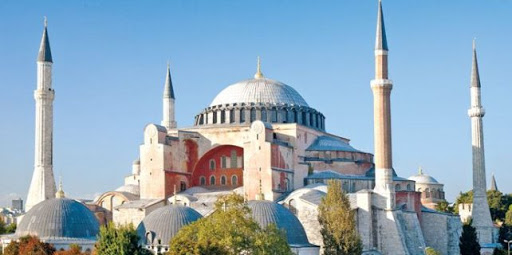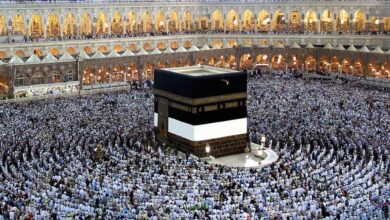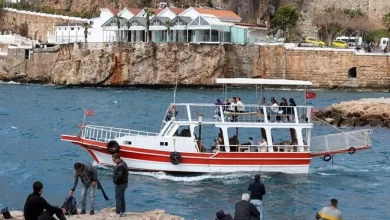- The Improtance of Hagia Sophia
- History of Hagia Sophia
- How to get to Hagia Sophia
There are many important monuments in Istanbul, but Hagia Sophia, which was built by the great Byzantine emperor Justinian in 537 and was called a church in 1453, was converted into a mosque by Fatih Sultan Mehmet after the conquest of Istanbul. This venerable monument, which was declared a museum by Atatürk in 1935, became one of the symbols of Istanbul due to its innovative architectural form, rich history, religious importance and extraordinary beauty.
Ground Floor
As you enter Hagia Sophia, you will see a bright mosaic of Christ as the third and largest gate (Imperial Gate). The dome of Hagia Sophia is famous for its large nave and gold mosaics.
Byzantine emperors sat on a throne placed in the omphalion, the inlaid marble section on the main floor.
Among the additions to the Ottoman building are a mimber and altar (prayer place showing the direction of Mecca) large 19th century medallions in gilded Arabic letters.
Although hidden by a recently used pier tower, you need to look northeast to see three mosaics at the base of the northern tympanum (semicircle) below the dome. These are 9th century portraits of Young St Ignatius, St John Chrysostom and St Ignatius Theodorus of Antioch. On their right, the concave triangle segment under the Dome is a 14th-century mosaic of a seraph (six-winged angel tasked with the care of God’s throne) face.
Gallery
Walk towards the return ramp at the northern end of Hagia Sophia to access the galleries. There is a magnificent Deesis ruins in the south gallery. This 13th-century mosaic depicts the Virgin Mary on the left and John the Baptist on the right. At the eastern end of the gallery, the 11th-century mosaic depicts the Empress Zoe and Constantine IX with the Monomachus Christ.
To the right of Zoe and Constantine is a 12th-century mosaic depicting the Virgin Mary, Emperor John Comnenus II, and Empress Eirene. The emperor, known as “the Good John,” is to the left of the Virgin, and the empress known for her charity is to her right. Their son Alexios, who died shortly after the portrait was made, is depicted alongside Eirene.
As you leave Hagia Sophia, be sure to admire the 10th century mosaic of the great Constantine, Virgin Mary and Emperor Justinian over the lunette of the inner door. Just after you exit the building through the Beautiful Gate, a magnificent 2nd century BC bronze door, there is a door on the left. This leads to a small courtyard that was once part of the 6th century baptism. In the 17th century, it was turned into a tomb for the baptized Sultan Mustafa I and Ibrahim I. The huge stone sink on display in the courtyard is the original font.
On the opposite side of Hagia Sophia Square, there are Lady Hürrem Baths (Hagia Sophia Hürrem Sultan Bath) built between 1556-1557. The bath, designed by Sinan, was built by Suleiman the Magnificent in the name of his wife Hürrem Sultan.
How to get to Hagia Sophia?
You can reach Eminönü and then Hagia Sophia Mosque by IETT buses from all over Istanbul. Also, if you get off at the nearby IETT Courthouse, you can walk 500 meters to reach the Hagia Sophia Museum.
If you are coming from the Anatolian Side, you can easily reach the Hagia Sophia Mosque by using the ferries between Üsküdar-Eminönü and Kadıköy-Eminönü.
Also, you can come to Sirkeci Station in Eminönü by the Halkalı-Sirkeci train line. Then, you can easily switch to the Hagia Sophia Mosque by the tram near the station.
You can take the tram to Hagia Sophia by using Gulhane and Sultanahmet stops.
* It is also possible to come to the Hagia Sophia Mosque and Museum by taxi or your own vehicle. However, Hagia Sophia Mosque and there is no parking space around it. So it will be easier to come by public transport.







